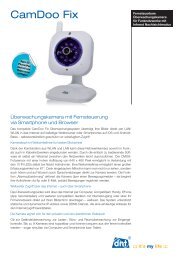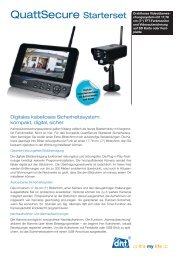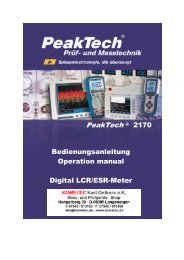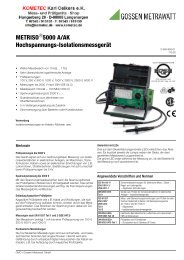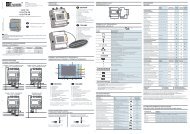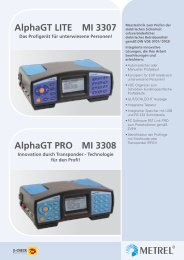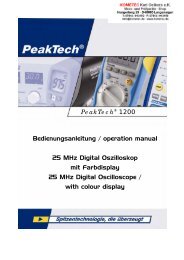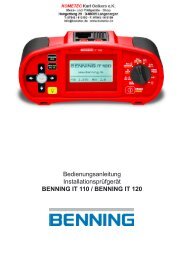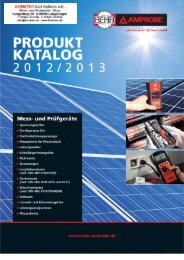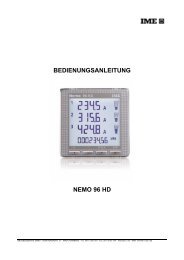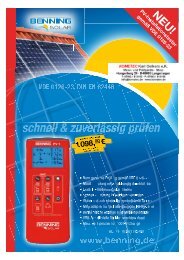C . A 8 3 2 - Shop Energia tutto per il fotovoltaico
C . A 8 3 2 - Shop Energia tutto per il fotovoltaico
C . A 8 3 2 - Shop Energia tutto per il fotovoltaico
Create successful ePaper yourself
Turn your PDF publications into a flip-book with our unique Google optimized e-Paper software.
➅ F 3-position centre switch :<br />
S<br />
OFF OFF Unit OFF.<br />
S Long response time measurement (use for<br />
fluctuating noise level measurements).<br />
F Fast response time measurement (most<br />
common o<strong>per</strong>ating mode).<br />
➆<br />
➇<br />
➈<br />
➉<br />
CAL<br />
Protective cap for the tester calibration screw.<br />
Screwdriver to be used for calibration of the sound<br />
level meter.<br />
'Jack' connector for recording using an external system.<br />
Assembly screw for photo tripod.<br />
11<br />
Femal type output for use with 'Jack' connector.<br />
4. UTILISATION<br />
4.1 Procedure<br />
1. Selection of measurement range<br />
The sound level meter features 3 measurement ranges each having a<br />
dynamic range of 55 dB:<br />
Low noise range level:<br />
35 to 80 dB<br />
Medium noise range level: 50 to 100 dB<br />
High noise range level:<br />
80 to 130 dB<br />
When noise measurement is active, the measurement is repeated more<br />
than 2 times <strong>per</strong> second.<br />
If the or arrows are shown continuously on the display, this means<br />
that the measurement range you are in is too high or too low. In this case,<br />
press the RANGE button unt<strong>il</strong> you return to the adequate measurement<br />
range.<br />
2. Choice of frequency weighting<br />
Since the ear does not have the same hearing sensitivity for all frequencies,<br />
f<strong>il</strong>ters are used which weight or correct the measurement levels according<br />
to frequency.<br />
Two correction curves A and C are on the CA832. To switch from one to<br />
the other a long press is needed ( > 2 seconds ) on the push button .<br />
The most common is weighting curve A corresponding to the “average<br />
international ear”. It is usually used for the measurement of nuisance<br />
levels in industrial areas.<br />
Curve C is more suited for verification of the presence of low frequency<br />
noise (if the measurement level on position C is higher than on position A<br />
, this means that the signal contains significant low frequency components).<br />
This curve is well suited for the measurement of musical environments.<br />
13



